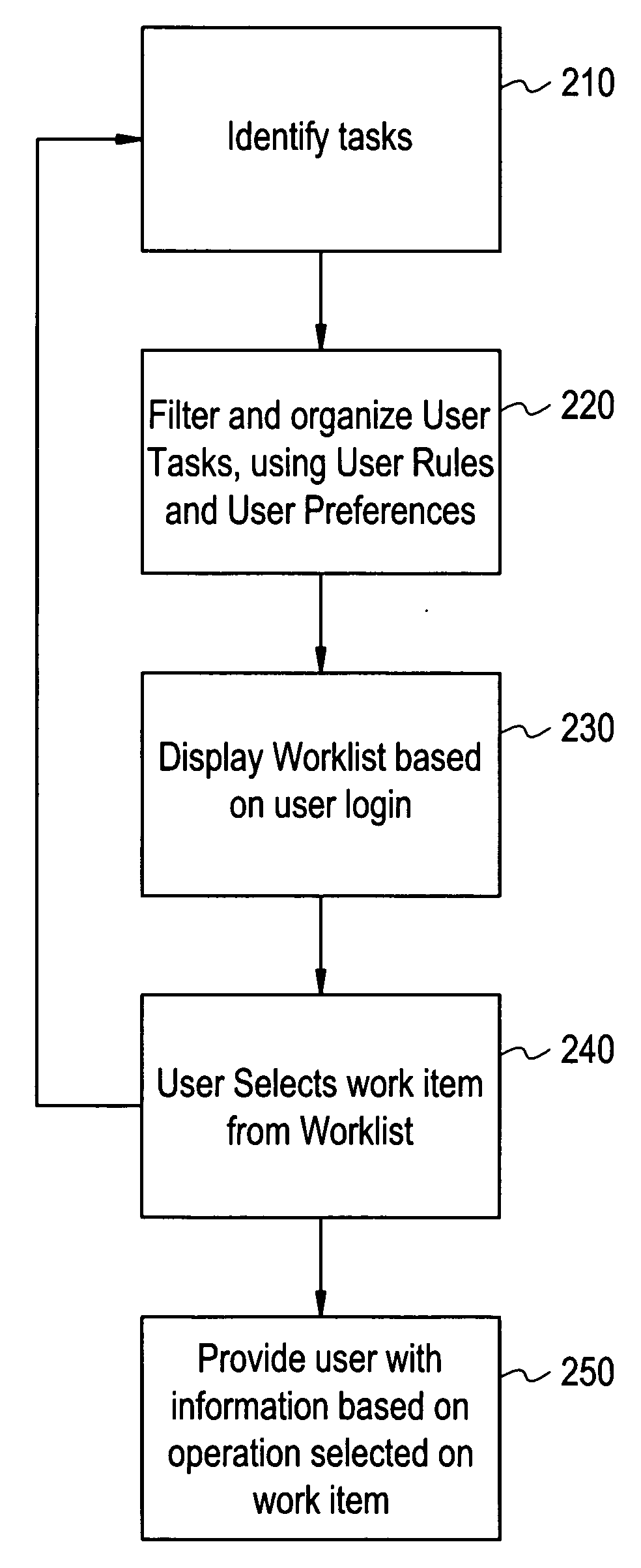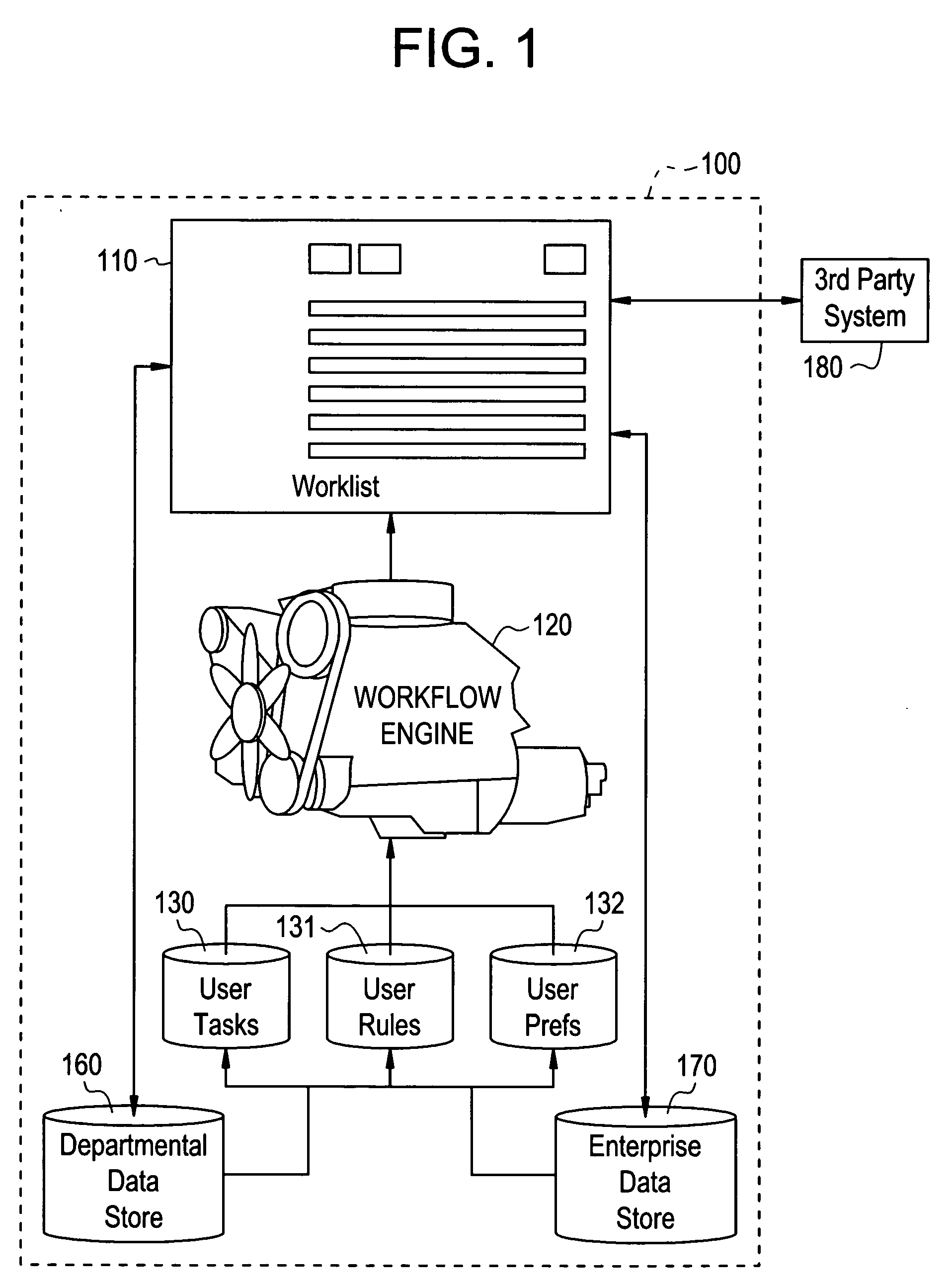System and method for providing a dynamic user interface for workflow in hospitals
- Summary
- Abstract
- Description
- Claims
- Application Information
AI Technical Summary
Benefits of technology
Problems solved by technology
Method used
Image
Examples
Embodiment Construction
[0028]FIG. 1 illustrates a dynamic worklist management system 100 used in accordance with an embodiment of the present invention. The system 100 includes a worklist user interface 110, a workflow engine 120, a plurality of databases 130, 131, 132, and at least one data store 160, 170. Databases 130-132 may include a user task database 130, a user rules database 131, and a user preferences database 132. Data stores 160, 170, may include a departmental data store 160, and an enterprise data store 170. The components of the system 100 may communicate via wired and / or wireless connections on one or more processing units, such as computers, medical systems, storage devices, custom processors, and / or other processing units. The system 100 may be implemented in software and / or hardware. In an embodiment, the dynamic worklist management system 100 is able to communicate with external third party systems 180. In an embodiment, the components of the system 100 are integrated into a single uni...
PUM
 Login to View More
Login to View More Abstract
Description
Claims
Application Information
 Login to View More
Login to View More - R&D
- Intellectual Property
- Life Sciences
- Materials
- Tech Scout
- Unparalleled Data Quality
- Higher Quality Content
- 60% Fewer Hallucinations
Browse by: Latest US Patents, China's latest patents, Technical Efficacy Thesaurus, Application Domain, Technology Topic, Popular Technical Reports.
© 2025 PatSnap. All rights reserved.Legal|Privacy policy|Modern Slavery Act Transparency Statement|Sitemap|About US| Contact US: help@patsnap.com



